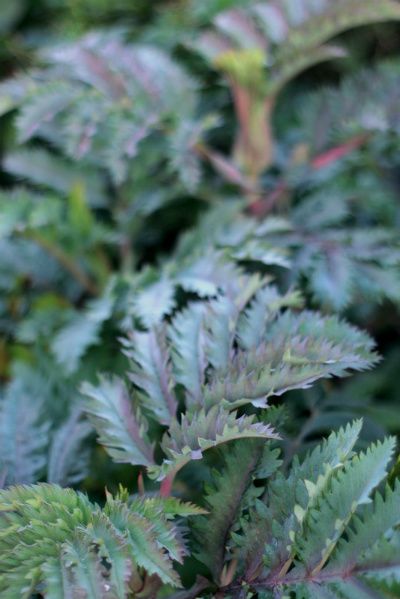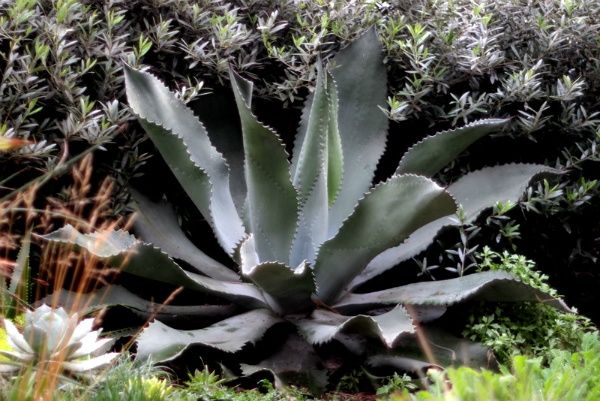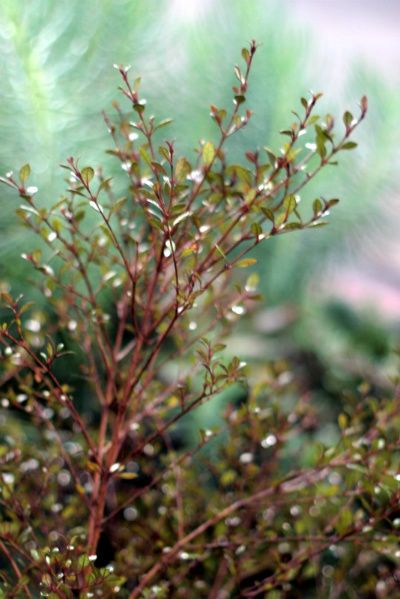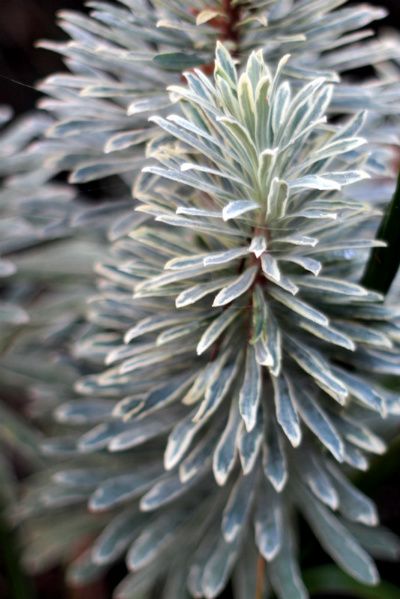 It’s plant catalogue season. Plant Delights and Derry Watkins’ Special Plants both arrived in the mail today, although I also seem to be getting quite a lot via email. Selfishly, my preferred format for the long, slow perusal required of a first-rate catalogue is on paper. (Next best is the iPad I don’t yet possess.) A string of computer glitches has put me in a technophobic mood, not to mention the glut of Clay Shirky reading I did yesterday, not to mention the new Gmail format. That this process of constant upgrades and innovation seems to have hit breakneck speeds is why I expect to wake up one morning looking like this fellow. (Image found here)
It’s plant catalogue season. Plant Delights and Derry Watkins’ Special Plants both arrived in the mail today, although I also seem to be getting quite a lot via email. Selfishly, my preferred format for the long, slow perusal required of a first-rate catalogue is on paper. (Next best is the iPad I don’t yet possess.) A string of computer glitches has put me in a technophobic mood, not to mention the glut of Clay Shirky reading I did yesterday, not to mention the new Gmail format. That this process of constant upgrades and innovation seems to have hit breakneck speeds is why I expect to wake up one morning looking like this fellow. (Image found here)
Did I already mention that I loathe the new Gmail format? Like the insomniac developers at Google who just can’t leave well enough alone, plant names can also really grate on the nerves. Just check any catalogue list of hosta or daylily offerings. Then there are those names that bring really sweet associations, like Melianthus ‘Purple Haze,’ which always reminds me of my brother’s hero worship of Jimi Hendrix, and when he mastered a reasonable approximation of the guitar solo from ‘Little Wing’ and first played it, to the rapturous awe of my 11-year-old self. Different song entirely, but if it wasn’t for the purple haze all in his eyes, we wouldn’t have the perfect name for this compact cultivar of Melianthus major with the lovely purple wash to its serrated leaves. The agave ‘Jaws’ is another name I never forget, which surely must be the aim when selecting names. But my being unable to forget this agave’s name might also have something to do with the fact that I coinicidentally purchased it on the day Roy (“That’s some bad hat, Harry”) Scheider died, February 10, 2008. Unfortunately, I can’t cite a source for this melianthus at the moment, but Plant Delights carries ‘Jaws’ in its extensive online agave offerings.


Agave ‘Mr. Ripple.’ Another memorable name.

But the name of this dark-leaved, lophomyrtus I transplanted yesterday always eludes me.
(Checking old blog entries, I find it’s ‘Red Dragon.’ Evergreen New Zealander.)
The euphorbia I remember only as not the weak grower ‘Tasmanian Tiger,’ a name easy to recall. Its true name, ‘Silver Swan,’ I can’t seem to commit to memory.


Roses tend to have memorable names, even when in French, e.g. Cuisse De Nymphe (“Thigh of Nymph”).
But the difficulty in finding catchy names for cultivars is nothing compared to the slow progress made in describing plants in Latin.
“Botanists are probably only about halfway through describing the plants on Earth, with roughly 200,000 species described. Yet only about 2,000 names get published a year at the current pace.” (ScienceNews.)
And having to publish new species in a printed format has proven cumbersome in the electronic age:
“[I]n July 2011, the international congress that meets every six years to revise the nomenclature code convened in Melbourne, Australia, and voted to accept certain forms of electronic publication.” (ScienceNews.)
“[R]esearchers have agreed to drop the requirement for hard copies of papers describing new species. Also vanishing from the code is a requirement that species must come with a Latin description.” (Nature.)
Names must still be in binomial Latin, as prescribed since Linnaeus, just not the physical descriptions. Beginning January 2012, “diagnostic botanical descriptions may be written in Latin or English, and the electronic publication of new names is accepted,” The New York Times 1/5/12, “The New Universal Language of Plants.”
Now, that’s progress even I can appreciate.
Added 1/23/12: “No longer will botanists have to write sentences like: ‘Arbor usque ad 6 m alta. Folia decidua; lamina oblanceolata vel elliptica-oblongata, 2-7 cm longa,’ as I did in 2009, describing a new species from Mexico. Instead, I could simply write that Bourreria motaguensis was a six-meter-tall tree with deciduous leaves that were 2 to 7 centimeters long.” – “Flora, Now in Plain English,” by James S. Miller, dean and vice president for science at the New York Botanical Garden. The New York Times, 1/22/12.

Ha…I’m always intrigued by the naming of plant varieties. By chance, I actually have some plants with the same cultivar name…they are just different species! I have Agastache ‘Purple Haze’ and Persicaria ‘Red Dragon’! I actually read somewhere that many of the new breeders use food terms when naming plants now…there was apparently some study that it made people more likely to buy them. Lo and behold, now I notice in every catalog just how many plants have “food” names. I LOVE when I finally get familiar enough with a plant’s latin name that i can comfortably use it…it always feels somewhat magical to say those names…like an incantation of sorts. Of course, I’m not ALWAYS sure I’m pronouncing them correctly…but that’s another matter 😉
Seriously?? Plant descriptions were written in LATIN until last July? Latin binomial nomenclature makes sense (to me, anyway) but describing them in Latin sounds like some weird parochial offshoot from the vestiges of Catholic Mass.
What do you think of that Lophomyrtus? I’m leaning in that direction for a spot by the wall. How does it do for you? Thanks!
Scott, I love that…an “incantation.” I remember the Latin names much easier than the cultivar names.
Jane, it is a bit like Vatican II for botanists. And I wonder if the Latin descriptors referred to are words like “glauca,” in which case the word “gray” will be used instead?
Hoov, I love these shrubs, very tough. The two I transplanted were really getting squashed in the back garden but still managing to grow and thrive. The pattern of small leaves would look great against a wall. There’s a bright variegated variety that’s worth considering. This ‘Red Dragon’ can easily disappear in a landscape.
I concur. The new Gmail “upgrade” is icky. What do they have against lines? I liked those thin lines between each entry. Have you seen that gear/wheel in the upper right hand corner? At least it allows us the option to make the whole arrangement more compact–a concession of sorts.
Anyway, superb photos, once again, Denise. I really enjoy botanical Latin and I hope the powers that be don’t make things too easy for us. As for all the cultivar names, they might be clever but they’re just marketing and the whole thing kind of annoys me.
Grace, I’m so glad you agree about the upgrade. So much to annoy these days!